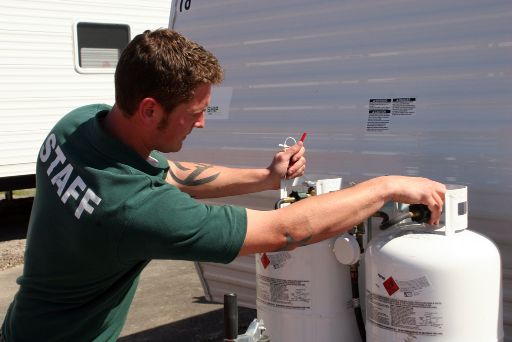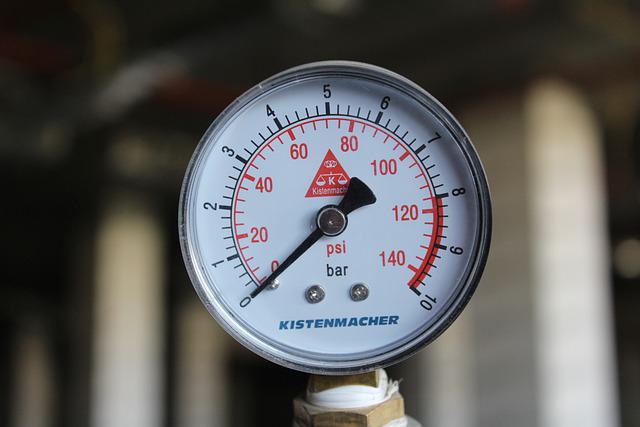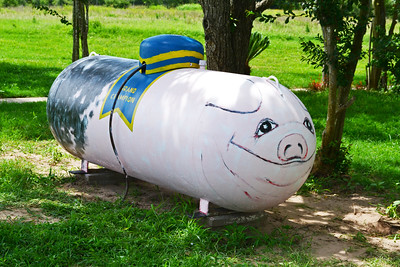
Most people don’t know that propane tanks are reverse thread. This means that the threads on the tank are the opposite of what you would normally expect. left-handed. This can be confusing and frustrating when you’re trying to connect your tank to a regulator or other fittings.
Fortunately, there’s an easy way to tell if your propane tank is reverse thread. Just look at the valve on the tank. If the valve is on the left side, then the threads are reversed. Some people think that reverse threading is a safety feature, but it’s actually just designed to make it harder to accidentally disconnect the tank. It’s not impossible to disconnect a propane tank, but it does take a little more effort.
What is a reverse thread propane tank?
A reverse-thread propane tank is a type of tank that is used to store and transport propane gas. These tanks are designed to be tightened by turning them in a counterclockwise direction, which is the opposite of the way that most tanks are threaded. The reverse threading is a safety feature that helps to prevent the tank from being accidentally opened or disconnected, which can be especially important in hazardous environments or if the tank is being stored in an area where it might be bumped or knocked around.
One of the main benefits of using a reverse thread propane tank is that it can provide a better seal than regular tanks. The reverse threading helps to ensure that the tank is tightened securely and is less likely to loosen over time, which can be especially important if the tank is being used in a high-pressure application or if it is being stored for an extended period of time.
Reverse thread propane tanks are also generally more durable than regular tanks, as they are less likely to be accidentally opened or disconnected, which can cause damage or wear and tear. Additionally, some devices and appliances are designed specifically to work with reverse-thread propane tanks, so using these tanks may be necessary in order to use these devices.
However, there are also some potential disadvantages to using reverse-thread propane tanks. These tanks may not be compatible with all devices and appliances, and they may be less widely available than regular (clockwise) threaded tanks. Additionally, special tools may be required to connect or disconnect a reverse-thread propane tank, which can add an extra layer of complexity to the process of using these tanks. Some people may also find reverse thread propane tanks confusing or difficult to use if they are not familiar with this type of tank.
How to tell if a propane tank is a reverse thread?
If you’re not sure which thread your propane tank has, there are a few ways to tell. The first is to look at the valve itself. If the valve has a recessed center and the handle is flush with the rest of the valve, it’s a reverse thread. Another way to tell is by looking at the connection between the tank and the regulator.
If the connection is recessed on the regulator side, it’s a reverse thread. Finally, you can try screwing in a standard propane connector (the type that would attach to a grill). If it screws in easily and smoothly, it’s a reverse thread. If it’s hard to screw in or feels like it’s going to strip, it’s a standard thread
What are the benefits of a reverse-threaded propane tank?
Reverse-threaded propane tanks have threads that are designed to be tightened by turning the tank in a counterclockwise direction. This is the opposite of the way that most tanks are threaded, which are tightened by turning them in a clockwise direction. There are a few benefits to using a reverse-threaded propane tank:
- Enhanced safety: Reverse-threaded tanks are less likely to be accidentally opened or disconnected, as it is more difficult for them to be accidentally loosened. This can be especially important in situations where the tank is being used in a hazardous environment, or if it is being stored in an area where it might be bumped or knocked around.
- Better seal: Reverse-threaded tanks can provide a better seal than regular tanks, as the threads are less likely to loosen over time. This can be especially important if the tank is being used in a high-pressure application, or if it is being stored for an extended period of time.
- Improved durability: Because reverse-threaded tanks are less likely to be accidentally opened or disconnected, they may be less prone to damage or wear and tear. This can make them more durable and longer-lasting than regular tanks.
- Compatibility: Some devices and appliances are designed specifically to work with reverse-threaded tanks, so using a reverse-threaded tank may be necessary in order to use these devices.
What are some disadvantages
There are a few potential disadvantages to using a reverse-threaded propane tank:
- Compatibility: One of the main disadvantages of reverse-threaded tanks is that they may not be compatible with all devices and appliances. Many propane-powered devices and appliances are designed to work with regular (clockwise) threaded tanks, and may not be able to be used with reverse-threaded tanks. This can be especially frustrating if you already have a device or appliance that you want to use with your propane tank, but the tank is reverse-threaded and the device is not compatible.
- Confusion: Some people may find reverse-threaded tanks confusing or difficult to use, especially if they are not familiar with this type of tank. If you are used to tightening regular (clockwise) threaded tanks, it can take some time to get used to the opposite direction that is required for reverse-threaded tanks.
- Limited availability: Reverse-threaded tanks may not be as widely available as regular (clockwise) threaded tanks, which can make them more difficult to find and potentially more expensive to purchase.
- Special tools: In some cases, special tools may be required to connect or disconnect a reverse-threaded tank. This can add an extra layer of complexity to the process of using a reverse-threaded tank and may make it more difficult for people to use these tanks if they do not have the necessary tools on hand.
Why do propane tanks have a reverse thread?
When you think about it, it makes perfect sense that propane tanks have a reverse thread. After all, you don’t want your propane tank to come unscrewed while you’re using it. The reverse thread ensures that the tank is securely fastened. There are two main reasons why propane tanks have a reverse thread.
First, it prevents the tank from coming unscrewed while in use. Second, it helps to prevent the accidental release of propane gas. Propane is a highly combustible gas, and if it were to leak out of the tank, it could cause a fire or explosion. The reverse thread helps to prevent this from happening by keeping the tank securely fastened.
Are propane connections reverse-threaded?
The quick answer is yes, propane connections are reversely threaded. This is to prevent the gas from escaping and to keep the connection secure. If you’re not familiar with reverse threading, it simply means that the threads on the connector are turned in the opposite direction of traditional screw threads.
This can be confusing when you’re trying to connect or disconnect a propane tank, but it’s important to remember that you’ll need to turn the connector clockwise to loosen and counterclockwise to tighten. If you’re still having trouble, there are plenty of tutorial videos online that can walk you through the process step-by-step. And of course, if you have any questions, your local propane company will be more than happy to help.

Mike is an experienced propane technician with over 15 years of professional experience in the field. He has dedicated his career to helping customers with their propane needs, from installation to maintenance and repair. Together with Jeremy, he co-founded this website to provide useful information and guidance to customers seeking reliable propane services.



